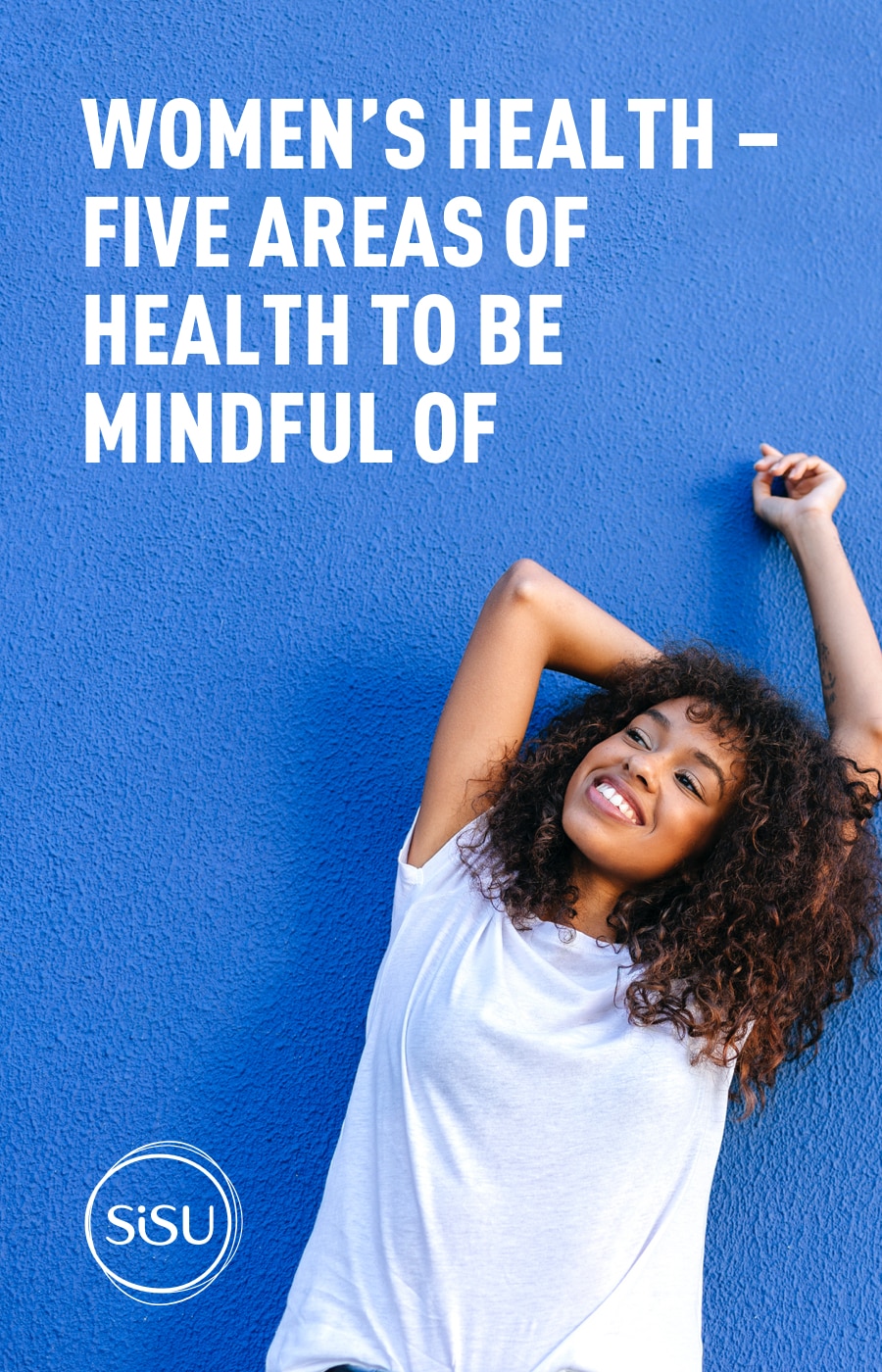
Practicing healthy habits, preventative actions, and mindfulness are some of the best ways to flourish and live a happy and satisfying life.

Women, in particular, have unique health and wellness needs. From bone health, as we age, to dealing with low iron needs in our younger years, it’s never too late or too early to practice holistic prevention and adaptation.
Learn more about how you can support key areas of health and wellness below.
1. Immune support
The immune system is the body’s defence against infection and illness.1 Therefore, it’s always important to support the immune system.
Like a guard watching out for danger, a healthy, functioning immune system is always on the lookout for harmful antigens to eliminate. When the body encounters these invaders, antibodies are created. These specialized proteins attach themselves to the antigens. These antibodies then stay in the body, so if the immune system encounters that particular antigen again, the antibodies are ready to jump in.2 This explains why someone who gets sick with a disease, like chickenpox, usually won’t get it again.
You can support your immune system by exercising regularly, eating a diet rich in fruits and vegetables, getting regular, adequate amounts of sleep, and minimizing stress.3 Learn more about the relationship between stress and sleep here.
You can help give your immune system a break by washing your hands regularly throughout the day, cleaning surfaces you frequently touch, and not touching your face when in public spaces or before you’ve washed your hands.
A premium vitamin C supplement can help support a healthy immune system.
2. Heart health
Did you know the number one cause of premature death among Canadian women is heart disease?4
Oxidative stress may be linked to cardiovascular disease, and over time may cause damage to the cardiovascular system.5 6 Oxidative stress occurs when free radical activity and antioxidant activity aren’t balanced in the body.7 In other words, when there are consistently more unstable free radicals in the body than antioxidants can keep up with.
Eating a diet full of antioxidant-rich foods is linked to a lower risk of heart disease.8 Certain antioxidants, like Coenzyme Q10 (CoQ10) in particular, help support heart health.
Eating the rainbow isn’t the only way to help balance free radical levels in your body. A good night’s sleep can work the same wonders. Sleep has been thought to help reduce free radicals in the body.9 Unsurprisingly, lack of sleep has been connected to many diseases, which are also linked to oxidative stress.10 11
Additionally, regular exercise has a positive effect on many of the risk factors for heart disease. Exercise can help reduce blood pressure and even reduce “bad” cholesterol levels in the blood and can raise the “good” cholesterol.12
You can learn more about heart health and antioxidants here.
3. Low Iron
According to the World Health Organization, iron deficiency is the most common and widespread nutritional disorder around the globe.13
Women who menstruate are much more likely to experience iron deficiency due to regular blood loss.14 Additionally, during pregnancy, the body needs more iron than usual.15 Extreme fatigue, weakness, dizziness or lightheadedness, and cold hands or feet are common symptoms of low iron or iron deficiency.16 If you experience these symptoms, consult a healthcare practitioner to find out if you are deficient in iron.
A premium iron supplement can help your body form red blood cells, help them function properly, and maintain good health. Your body can also get iron from the food you eat. Iron-rich foods include meat, eggs, leafy green vegetables, and iron-fortified foods.17
4. Bone Health
A study found that women were four times as likely to have osteoporosis than men.18
Osteoporosis is a bone disease that occurs when the body loses too much bone, makes too little bone, or both. When this happens, the holes and spaces in the bones are much larger than in healthy bones. Osteoporotic bones have less density or mass and contain abnormal tissue structure.19
You can support healthy bones by getting enough vitamin D & calcium, regularly walking and jogging, and doing weight-bearing aerobic exercises & resistance training.18
Consider taking a premium Calcium supplement if you need more calcium than you can obtain through your diet alone.
 5. Skin health
5. Skin health
As your largest organ, the skin has many jobs, such as protecting us from microbes and the elements and helping regulate body temperature.20
One of the most significant ways to care for your skin is to protect it from the sun.21 Sun damage can cause skin problems in the future. Be sure to use sunscreen, if possible, avoid direct sun exposure in the summer between the hours of 10 am and 4 pm (this is when the sun’s rays are strongest) and wear protective clothing.23
Keep your skin hydrated by drinking plenty of water (eight 8oz glasses per day, or 2 litres).22
In addition to many other health issues, smoking also causes damage to the skin. Smoking narrows the tiny blood vessels in the outermost layers of skin, which decreases blood flow. This also depletes oxygen and nutrients that are important for skin health.25 Smoking can also damage collagen and elastin — the proteins that give your skin strength and elasticity.23
Antioxidant-rich foods can help protect and support the skin. Some of these skin-friendly foods include:24
- Carrots, apricots, and other yellow or orange fruits and vegetables
- Leafy green vegetables
- Tomatoes
- Berries
- Beans, peas, and lentils
- Salmon, mackerel, and other fatty fish
- Nuts
You can also help to maintain and support healthy skin by taking a premium supplement.
Lifestyle, diet, and exercise habits can further support these five pillars of health. Learn more about the latest health and wellness information by following Sisu on Instagram.
If you have health problems, please seek help from a healthcare practitioner. Always check with a healthcare practitioner before taking a nutritional supplement. These recommendations are for information and education purposes.
1 https://whoami.sciencemuseum.org.uk/whoami/findoutmore/yourbody/whatdoesyourimmunesystemdo
2 https://kidshealth.org/en/parents/immune.html
3 https://www.health.harvard.edu/staying-healthy/how-to-boost-your-immune-system
4 https://www.heartandstroke.ca/what-we-do/media-centre/news-releases/2018-heart-report-news-release
5 https://pubmed.ncbi.nlm.nih.gov/10872549-role-of-oxidative-stress-in-cardiovascular-diseases/
6 https://www.ahajournals.org/doi/10.1161/01.ATV.0000150649.39934.13
7 https://www.healthline.com/health/oxidative-stress#effects
8 https://www.healthline.com/nutrition/foods-high-in-antioxidants#section1
9 https://www.ncbi.nlm.nih.gov/pubmed/7838006
10 https://www.ncbi.nlm.nih.gov/pubmed/21300732
11 https://www.ncbi.nlm.nih.gov/pubmed/21030723
12 https://www.ahajournals.org/doi/full/10.1161/01.CIR.0000048890.59383.8D
13 https://www.who.int/nutrition/topics/ida/en/
14 https://www.mayoclinic.org/diseases-conditions/iron-deficiency-anemia/symptoms-causes/syc-20355034
15 https://www.womenshealth.gov/a-z-topics/iron-deficiency-anemia
16 https://www.mayoclinic.org/diseases-conditions/iron-deficiency-anemia/symptoms-causes/syc-20355034
17 https://www.mayoclinic.org/diseases-conditions/iron-deficiency-anemia/symptoms-causes/syc-20355034
18 https://www.canada.ca/en/public-health/services/chronic-diseases/osteoporosis/what-impact-osteoporosis-what-canadians-doing-maintain-healthy-bones.html
19 https://www.nof.org/patients/what-is-osteoporosis/
20 https://www.webmd.com/skin-problems-and-treatments/picture-of-the-skin#1
21 https://www.mayoclinic.org/healthy-lifestyle/adult-health/in-depth/skin-care/art-20048237
22 https://www.btb.termiumplus.gc.ca/tpv2guides/guides/wrtps/index-eng.html?lang=eng&lettr=indx_catlog_l&page=9lyUmw4Vym7k.html
23 https://www.mayoclinic.org/healthy-lifestyle/adult-health/in-depth/skin-care/art-20048237
24 https://www.mayoclinic.org/healthy-lifestyle/adult-health/expert-answers/healthy-skin/faq-20058184

